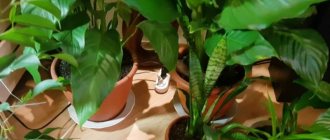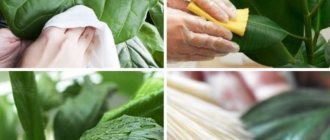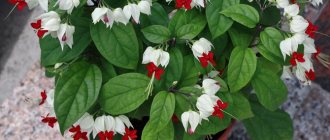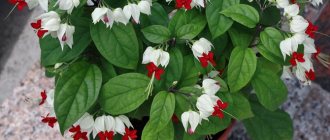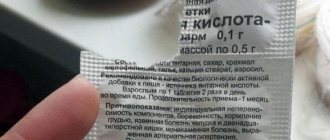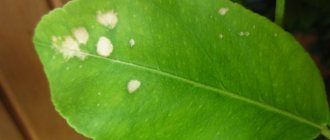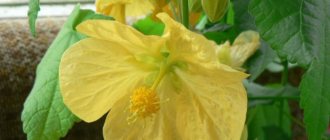A product purchased at a pharmacy as a medicine for humans may surprise you with its properties: succinic acid for indoor plants is akin to a magic balm. It is this drug that is recommended by experienced flower growers to revive a dying flower or as an emergency treatment for a plant that is poorly established after transplantation. The Agronom.guru portal considers it unacceptable to hide from readers such important information about the properties and benefits of succinic acid for indoor floriculture.
Are your plants looking stunted? But ours don’t, because we use advice from articles on Agronom.guru!
Succinic acid in tablets and powders - what is it?
Colorless crystals that easily dissolve in liquid media, as well as in ether, are called ethane-1, 2-dicarboxylic acid; in everyday life they have the beautiful name succinic acid.
What fits into such a small jar can be found in small quantities in living and plant organisms
Externally, the powder looks like a free-flowing white substance and does not smell of anything.
IMPORTANT INFORMATION!
People who respect the environment will be pleased to know that this product decomposes without harming the environment.
Another form of release is tablets.
They can also be used in floriculture, ground to a powdery state. Despite some inconvenience in use, succinic acid in tablets has found its use for plants.
How to use for watering and fertilizing
Despite the fact that succinic acid is not harmful to flora, it must be used correctly. Only in this case will there be an effect. Methods of application are different for each specific case. They depend on the purpose, the type and variety of crop.
What does it look like and what is it for?
Succinic acid is a product of amber processing. It has the form of an odorless and colorless powder. It dissolves well in water.
It is found in minimal quantities in many plants, as well as inorganic formations: coal, amber and maleic anhydride. From the latter it is extracted for industrial purposes.
In the food industry, the substance is used as an acidulant. In agriculture, its purpose is to stimulate plant growth, accelerate development and increase productivity.
Properties of succinic acid when exposed to plants
What can you tell us about the properties of the magic drug? The first quality of succinic acid is that it is such a universal fertilizer that you don’t have to worry about overfeeding the plant when caring for it. The drug has such a good effect on plants that it does no harm, but only one benefit. Succinic acid has a qualitative effect on the processes of growth and absorption of nutrients by flowers, and helps with stress during transplantation or pruning.
This soil fertilizing remarkably regulates the microflora and its microorganisms. If you treat the roots with the product, you enhance their growth and give them strength. By influencing young shoots, you help the plant branch. Acid is also indispensable when propagating by cuttings and seeds: both can be processed, improving survival rate and increasing germination.
Any plant craves your care, especially delicate violets. If you haven’t fed them with succinic acid yet, then it’s not too late to do so, because the result is worth it!
To have a full effect on the seeds, they are soaked in an aqueous acid solution (up to 0.02%). You can spray your flowers with an aqueous solution with an amber agent - and the plant will gain more strength and growth will increase.
Spraying is especially useful before flowering.
For indoor plants
Growing plants at home always causes stress for flowering crops. Sometimes they lack soil due to the small volume of the pots. Lack of oxygen and sunlight is always a serious test for flower crops.
Being an effective growth stimulator and natural adaptogen, the acid has a positive effect on indoor plants. She:
- Reduces the negative impact of stress factors (temperature, moisture-related and lighting);
- Increases the immunity of flowers to bacterial and fungal infections;
- Promotes the formation of beneficial soil microflora and rapid absorption of nutrients from the substrate;
- Well restores chlorophyll in leaves;
- Strengthens the root system after transplantation, activates the formation of new roots;
- Promotes rapid restoration of crops damaged by insect pests.
How to use fertilizer in tablets
If the substance is purchased in tablet form, then its dosage is 0.1 g. To get a liter of a strong 0.2% solution, you need to take 20 tablets. To speed up their dissolution, they are ground into powder. To obtain a 0.02% solution, take 2 tablets per 1 liter of water.
Aqueous solutions are prepared before use, as they quickly lose their beneficial properties. Store solutions for no more than 3 days.
How and when to spray plants
The fastest way to deliver nutrients is to process flower crops leaf by leaf. Solutions are absorbed more efficiently on the underside of the leaf, where the stomata are located.
Spraying is beneficial in the following cases:
- in the spring, when flowers emerge from hibernation;
- after pruning the stems to activate the development of lateral buds;
- after treatment with chemicals;
- after illness, damage by insects;
- after prolonged exposure to unfavorable conditions.
During flowering, crops are not sprayed. Evening or morning hours are convenient for work.
Benefits for roots
The effectiveness of succinic acid in stimulating root formation is moderate. Therefore, if you need to quickly root a flower cutting, it is better to choose stronger agents (Heteroauxin, Kornevin). But as a support and restoration of roots - that’s it.
For which flowering crops is succinic acid useful?
Experienced gardeners use acid to grow orchids as an indispensable auxiliary tool.
In addition to these flowers, the following flower crops respond well to treatment:
- dracaenas;
- ficus;
- begonias;
- palm trees (especially dates);
- roses;
- all types of succulents.
Pros and cons of succinic acid in tablets and powders for indoor plants
We have already said that the product can be purchased in powder or tablet form. If the name on a pack of tablets sounds like Yantavit, Yantarite, Cogitum and others, then don’t waste your money, it’s useless for plants. You need to look for a drug containing only succinic acid! Before use, you will have to grind the tablet into a fine powder. That is why it is preferable to buy the drug immediately in finished form - in powder.
Manufacturers have appreciated the beneficial properties of the drug and offer powders ready for dilution especially for flower growers
Precautionary measures
In practice, it has been proven that an overdose does not cause harm. Succinic acid is present in 65% of plants. But the biomaterial should be diluted according to the instructions. Especially when it comes to irrigation. A strong solution can cause a burn to the green part.
For humans and animals, amber is not toxic or harmful. Therefore, you can carry out any manipulations without gloves or a respirator. It is worth remembering that you must avoid getting acid on the mucous membrane. An acidic environment promotes inflammation and vision problems.
How to properly dilute succinic acid for flowers
We will clearly demonstrate the process of diluting succinic acid.
Advice! 4-5 days before treatment, be sure to lightly feed the plants with complex fertilizer diluted in water.
| Photos of the process | Comments |
| Prepare two paper napkins, a tablespoon, a jar of water, boiled and cool water, and succinic acid tablets. | |
| Once again, please note that the tablets must be called “Succinic Acid” and nothing else! | |
| Below we will give the necessary proportions for the solution depending on the purpose of use. Consider the weight of one tablet and the amount of active substance in it. To do this, carefully read the composition on the pack. | |
| Take the number of tablets you need and place them on one napkin. | |
| The second napkin is needed so that the product does not crumble, but is in one place. Cover the tablets with a napkin and begin to actively crush them with the back of a tablespoon. | |
| After working a little, open the napkin and evaluate the result. If the tablets have not yet turned into powder, the process will have to be continued. | |
| Open the napkin again. You should have a fine powder underneath. | |
| Pour a little boiling water into the jar - the solution will be faster in hot water. | |
| Carefully fold the napkin with the powder and pour it into a jar of water. Stir. | |
| After stirring a little, you need to add a little cool water (up to 1 liter) and continue stirring. | |
| The finished solution looks transparent and free of large particles. |
Additional information: for a total amount of water of 1 liter, take 2 g of pure powder.
Soaking tomato and cucumber seeds for seedlings in succinic acid: instructions
This manipulation improves the similarity of the seeds.
Instructions:
- Dissolve 2 acid tablets in a liter of water until the crystals disappear
- After this, pour the seeds onto a saucer and fill with the prepared liquid.
- Soak the seed in the solution for a day. Drain the solution
- Place the seeds on a napkin and let dry completely
- You can sow
Soaking tomato and cucumber seeds for seedlings in succinic acid: instructions
Instructions for using succinic acid for plants
We mentioned that the drug is used as a pre-sowing treatment of seeds, for soaking cuttings, and spraying. It's time to tell you why else you need succinic acid in tablets or powder. To quickly root the cuttings, make a solution of strong concentration - at least 0.5-1%. Dip the planting material with the lower cut into the solution a couple of centimeters and leave for a day.
Keep in mind, despite its properties, succinic acid is not a magic wand: it will not help in the formation of new tissues, it will only stimulate the growth of existing ones. In general, the instructions for using succinic acid in floriculture are simple and clear. If you need to stimulate growth and flowering, then spray the flowers with a solution with a concentration of 0.1%. Spraying is carried out twice a day. Three times processing is enough.
In order to enhance the growing season, you can spray once every 2 weeks. A damaged plant with signs of frostbite, waterlogging, drying out, or simply needs an acid solution during replanting. For treatment you will need a 0.2% aqueous solution. Course of treatment: once every three weeks. Now you know how to properly dilute succinic acid for flowers.
How to soak seeds in succinic acid before sowing
To carry out pre-sowing treatment, you will need a 0.2% solution. This remedy will also help for seeds that have been sitting for a long time. It is enough to soak the seeds for a day and dry them before sowing.
How to use succinic acid in tablets and powders for seedling engraftment
The seedlings are sprayed with a weak concentration solution several times: after a pair of true leaves appear under the film, after 2 weeks and before planting.
After this treatment, seedlings grow strong and strong.
How to wipe and spray leaves and stems with succinic acid
How else can you effectively use succinic acid for indoor plants? The green parts of the plant are sprayed with a weak aqueous solution from a spray bottle. For large leaves, wiping with a cotton pad soaked in a solution will be useful.
How to water flowers with succinic acid in tablets and powders
Now let's figure out how to water flowers with succinic acid. When using tablets, take two pieces per 2 liters of settled water at room temperature. Dissolve by stirring and carry out regular watering at the root.
The plant cannot live without water. And such healing water will provide useful help to the flower.
Indications for use in the garden
If there is a lack of acid in the soil, plants report this by giving certain signals:
- If it is weak, with sluggish and poorly growing shoots, it makes sense to process it according to the instructions.
- Poor seed germination makes it clear that the soil is not rich enough in microelements. In this case, you can use this germination and growth stimulator.
- Any weakening of the crop, susceptibility to disease and poor yield are the main indications for use.
Why do gardeners fertilize and water?
Succinic acid is chosen as an additional fertilizer. It cannot replace basic fertilizer, but makes it more effective. Thanks to this, fertilizing can be significantly reduced.
There are several main reasons and purposes why gardeners feed and water seeds or seedlings with this simple, safe but popular remedy.
- At the planting stage, the seed is pre-soaked to activate germination.
- Treatment of cuttings improves the process of root formation.
- Treatment of roots and shoots strengthens the immune system and promotes active growth.
- Protection against diseases is another reason for use.
Succinic acid does not eliminate diseases or kill parasites, but it greatly increases the natural immunity of plants. Sometimes it is used in a vegetable garden or garden purposefully, to increase productivity and improve the taste of fruits.
How to use succinic acid for orchids - nuances
We simply cannot ignore the question of how to use succinic acid for orchids: this particular flower is extremely responsive to treatment with this drug. Epiphytic plants have very vulnerable roots, and stimulating them will have a beneficial effect on the entire flower. The use of such a product will increase the stress resistance of the orchid, help the leaves acquire good turgor, and the flower petals stay on the plant noticeably longer. Knowing how to dilute succinic acid for orchids, you can enhance growth, restore balance in the soil, strengthen the plant, help it take root or recover. All parts of the flower are subject to treatment: the roots can be immersed in the solution during replanting for a couple of hours.
ATTENTION!
Before planting the orchid in the ground, the root system must be dried.
The leaves can be sprayed or washed with a cloth soaked in an aqueous solution of the stimulant. Just remember that the plant should become moist, not wet.
The entire plant can be treated with succinic acid from a spray bottle: this procedure will cause the growth of new shoots
Do not use a prepared solution that is more than three days old.
The solution is prepared from 1 g of powder and 5 liters of water or 1 tablet per 0.5 liter of water.
Instructions for use
They don’t just use tablets; they always prepare a solution that is used for watering, spraying, and fertilizing.
How to properly dilute tablets in water at home
If tablets are used, they are first dissolved, and then this solution is further diluted with water.
| To prepare 10 liters for watering: | 10 pieces (tablet – 0.1); 4 pieces (tablet – 0.25). |
| For spraying: | 3 pieces (0.1) per 1000 ml of water. |
| To prepare seeds: | 4 tablets (0.1) per 1000 ml types. |
Preparation of solutions of 0.1 percent, 0.02 percent, 0.002 percent:
- To prepare a concentrated solution - 10 tablets (0.1) per 250 ml of water.
- To prepare a 0.1 percent solution, add 750 ml of water.
- 0.02 percent - add 750 ml of water to 250 ml of a 0.1 percent solution.
- For 0.002 percent - 250 ml of a 0.02 percent solution is taken in a bucket of water.
What proportions to use for feeding?
The following options are used for feeding:
- 1% solution: 1 g of succinic acid is diluted in 50 ml of water (warm!), then 950 ml of water is added to the solution.
- A 0.01% fertilizer solution is prepared from 100 ml of a 1% solution and 900 ml of water.
- A 0.02 percent solution is prepared from 200 ml of a 1 percent solution and 800 ml of water.
Precautionary measures
On the one hand, succinic acid is harmless; watering and spraying do not require special protective measures for the gardener.
However, the concentrated solution is dangerous,
Therefore, it is better to carry out all operations with gloves.
You should also always follow the recommendations specified in the instructions for the drug. A solution of the required concentration will help, but if the dosage is violated, the soil will become unusable, and the plant will receive leaf burns.
How to feed seedlings
Precautions when working with succinic acid
The drug is not toxic to living beings or the environment. However, it is unlikely that your eyes or skin will respond with gratitude if such a product comes into contact with them. First aid in both cases is rinsing with water. If it gets into the stomach, there should be no concern; this remedy is used internally as an antiviral and antibacterial. The skin can be lubricated after washing with any anti-inflammatory cream. It is not recommended to use powder that is more than three years old. For safety reasons, it is best to work with gloves and follow the dosage.
Effect on plants and soil
The low level of metabolism in many indoor plants leads to weakness of the above-ground and underground parts of flowers, poor growth, and weak release of buds. Succinic acid in optimal doses activates metabolic processes, gives ornamental plants strength, and has a positive effect on many processes.
The complex effect of the beneficial substance:
- normalizes the process of photosynthesis, accelerates energy saturation;
- increases resistance to negative factors: plants can more easily tolerate transplanting, picking, lack of watering, and low temperatures;
- absorption and absorption of nutrients is activated;
- indoor flowers grow faster.
Succinic acid has a positive effect not only on plants, but also improves the condition of the soil. Metabolism in single-celled organisms living in the soil proceeds at a faster rate, colonies of microorganisms increase faster, which increases the fertility of the soil.
Possible harm and precautions
Succinic acid has a positive effect on indoor flowers; there are practically no cases of negative reactions to the biostimulant. Do not neglect the rules described above. Reviews of succinic acid for indoor flowers are almost always positive. It is not difficult to prepare a working solution of suitable concentration: there is a detailed description of the process, the proportions of water and natural acid.
The rules for protecting your skin and eyes are also simple:
- wear thin gloves;
- do not touch your face when processing plants and seeds;
- carefully add clean water to the main (strong) solution, and not vice versa;
- after carrying out agricultural activities, wash hands thoroughly;
If the working solution accidentally gets into your mouth or eyes, rinse the problem area well with running water. If a large volume of growth stimulant is swallowed, you can induce artificial vomiting and drink enterosorbent. If redness, burning, itching, swelling, or other signs of allergic reactions or intoxication appear, consult a doctor immediately.
Improving the microbiological composition of the soil, stimulating the growth of flowers and the release of buds, accelerating rooting, and increasing seed germination is much easier when using succinic acid. A working solution of optimal concentration, prepared according to the rules, has a positive effect on many processes in the life of indoor plants.
Succinic acid helps indoor flowers grow healthy, strong and beautiful, and can also save them from death. More useful information about the nuances of using natural remedies can be found in the following video:
How to use
Succinic acid has a positive effect on indoor plants during all periods of the life of green decor. Flower growers advise using a working solution of higher and lower concentrations not only to stimulate the growth of green mass, but also in other cases.
Recommendations:
- adhere to the norm for a specific event;
- correctly prepare the working solution, taking into account the safety requirements for the skin and eyes;
- know the optimal frequency of adding the nutrient mixture and the volume of growth stimulator for specific flowers in the home.
Top dressing
For each agricultural activity, a solution of a certain strength is needed. When soaking seeds, a more concentrated product is used than when treating leaves with active release of buds. The types of measures and the optimal strength of the working solution are described below.
Application for roots
If replanting rather than transshipment is allowed for a decorative flower, and you can remove the earthen lump from the underground part, then it is useful to soak the elements in a solution of succinic acid. The roots are soaked shortly before planting, which stimulates the formation of a powerful root system and shoots. The optimal concentration of the finished product is 0.02%, the procedure time is from 4 to 6 hours.
Spraying
Many gardeners process leaf blades during the budding phase. A simple event gives the plant strength and activates the appearance of buds.
During this period, a working solution of weak concentration is prepared - 0.002%. Copious spraying of the leaves is carried out once or twice, and after a couple of weeks the procedure is repeated. To strengthen the immunity of indoor flowers, it is important to correctly use such a powerful biostimulant as succinic acid
Seed treatment before sowing
To improve the germination of seed, a product based on succinic acid is prepared (concentration - 0.02%). The seeds are placed in liquid, kept for a day or two, dried in air, and sown.
Stimulation of root formation during cuttings
A quick and cheap method for activating the rooting of young shoots. Prepare a 0.02% solution and pour it into jars. Freshly cut cuttings are placed in a nutrient medium. The liquid should cover the branches by 2–3 cm. Duration of treatment is from 10 to 15 hours.
How to prepare the solution
To fertilize home flowers, you need to prepare a solution with succinic acid. Depending on the purpose, a solution of varying concentrations is needed. Orchids are treated with a 1% solution. To prepare it, take a small amount of warm water and add succinic acid (1 gram) to it. Wait for the acid to completely dissolve. The mixture is then diluted with cold water to make a liter of solution.
For other colors, a 0.02% solution is required. To do this, add a 1% solution in an amount of 200 ml to 0.8 liters of cold water.
You may be interested in: How to feed geraniums at different times of the year
To obtain a 0.05% solution, you will need to take half a liter of a 1% solution and add half a liter of cold water.
Production and release form
The acid consists of white crystals that are odorless, easily dissolved in an aqueous environment and quickly disintegrate in the soil. It is a product of amber processing, but is also found in nature. It can be found in small quantities in brown coal and living organisms.
Succinic acid for flowers is sold not only where you can buy gardening tools, but also in the pharmacy. It can also be ordered online. It is produced in the form of a fine-crystalline powder or in the form of tablets of 0.25 g and 0.1 g. Everyone can choose what is more convenient for them: the tablets for preparing the solution need to be crushed, and the powder must be weighed and the required amount measured. The average price of a stimulant is 40 rubles per 100 g.
Watering tomatoes with succinic acid solution
Tomatoes respond very well to the use of this product.
- Succinic acid helps combat changes in ambient temperature and moisture deficiency.
- Treated seeds and plants independently resist pests, as well as viruses and fungi.
- Promotes the formation of new ovaries, more uniform flowering and fruit set, and the fruits themselves become sweeter and tastier, and more nutrients are formed in them.
- Beneficial microflora is formed under tomato bushes, which also has a positive effect.
To soak the seeds before, 2 g (less than a teaspoon) of succinic acid powder is diluted in a small amount of warm water, stirred, and then the volume of water is adjusted to 1 liter. The seed material is kept in solution for a day, then dried and sown in the ground for seedlings.
Seedlings and adult plants are watered or sprayed with a solution prepared at the rate of 2 g of powder per 20 liters of water (2 buckets), water the tomatoes at the root from a watering can without a diffuser in a thin stream. Use 0.5-1 liter of solution per root. This solution can be used to water adult tomatoes growing in a greenhouse and in open ground.
It is better to water adult plants during the period of active appearance of buds 3 times per season with an interval of 2 weeks. Thus, you will significantly increase the yield of tomatoes from each bush.
Plant Compatibility
Succinic acid is used in the care of indoor plants, flower beds, fruit and berry crops, as well as basic vegetables: tomatoes, peppers, cucumbers, eggplants, potatoes.
This product is suitable for pre-sowing preparation of seeds, for rooting cuttings, to improve the survival rate of vegetable seedlings, and to stimulate growth and flowering.
This is a means for watering, spraying and feeding.
Methods of use
There are several methods for using this substance in plant growing and floriculture.:
- Spraying flowers with a solution of succinic acid even once every few weeks will significantly enhance their growth and development. To do this, spraying can be carried out before flowering begins, and the treatment can be carried out several times. As a rule, over time of plant growth, the number of treatments is noticeably increased, while increasing the concentration of the solution by 5-10 times;
- rapid growth of new roots will be facilitated by soaking the root system for 40 minutes in the solution. After this, the roots are dried for 30 minutes and planted in the ground;
- Rooting of cuttings will be more successful if the previously cut cuttings are soaked by immersion no more than 2 cm in an acid solution for 24 hours.
Attention: Succinic acid should be stored in undiluted form in a dark and dry place, at an air temperature of no more than 25 degrees. The proximity of food and medicine, as well as accessibility to children and animals, is strictly prohibited.
Benefits for plants
Succinic acid is not a fertilizer. However, its use brings undoubted benefits:
- The substance ensures better absorption of nutrients and increases the resistance of crops to the negative influence of external factors . The element helps to cope with high humidity, too dry air, and exposure to high temperatures.
- Systematic use of the product has a beneficial effect on the plant’s immune system and helps strengthen it . This increases resistance to diseases and harmful insects.
- The product has a good effect on the composition of the soil . It significantly improves the composition of the soil, promotes the destruction of toxic substances and the death of bacteria.
- Using the product helps cleanse the soil of man-made pollutants . These include pesticides, heavy metal salts, etc.
- The substance is a natural stimulator of metabolic processes in crops . It is especially useful to soak seeds and flower sprouts in an acid solution.
- Regular watering with a solution of this product increases the amount of chlorophyll in the leaves and improves their susceptibility to fertilizers . Prevents the accumulation of nitrates and increases the content of nutrients.
- The product can be used as first aid for plants that have suffered from root rot or harmful insects .
Heals sick flowers
By using succinic acid, you can heal sick flowers. Treatment will be required if the plant dries out or is weakened after illness. In such a situation, experienced gardeners recommend spraying the foliage and stems with an aqueous solution with a concentration of 2.5%. The procedure is repeated after 2-3 weeks.
Treatment with butanedioic acid will quickly restore the strength of the ornamental crop and help it recover from illness or pest attacks.
Stimulates growth and development
Succinic acid is called a growth stimulator. By watering or spraying flowers in the country, you can speed up the metabolic processes occurring inside the green organism. This will contribute to their accelerated development.
Watering with the drug will ensure the growth of the plant's root system, and spraying will accelerate the appearance of new shoots and promote the growth of leaves.
The product is also used for pre-sowing treatment of seeds. By soaking them in a solution of the drug (at a concentration of 0.2-0.5%), you can speed up germination. Two cotton pads are moistened with the composition. Place flower seeds on one of them and cover with the second. Place a saucer with soaked seeds under plastic wrap. The shelter is removed after the sprouts appear.

